Hampi is a UNESCO World Heritage Site located in the Bellary district of Karnataka, India. Here are 17 facts about Hampi temple.
The temples in Hampi display an exquisite blend of Dravidian and Hoysala architectural styles. The most famous temple in Hampi is the Virupaksha Temple, dedicated to Lord Shiva. This temple is still an active place of worship and attracts devotees from far and wide.
Other prominent temples in Hampi include the Vittala Temple, which is renowned for its iconic stone chariot and musical pillars, and the Hazara Rama Temple, known for its intricate carvings depicting mythological stories.
Hampi is located on the banks of the Tungabhadra River, surrounded by a stunning landscape of boulders, hills, and ruins. The site is a haven for history enthusiasts, architecture lovers, and spiritual seekers.
The town of Hampi is well-connected by road and can be reached from nearby cities like Hospet and Bellary. Exploring the Hampi Temple complex is like stepping back in time, as visitors can marvel at the architectural wonders and soak in the spiritual aura of the ancient temples.
Facts About Hampi Temple
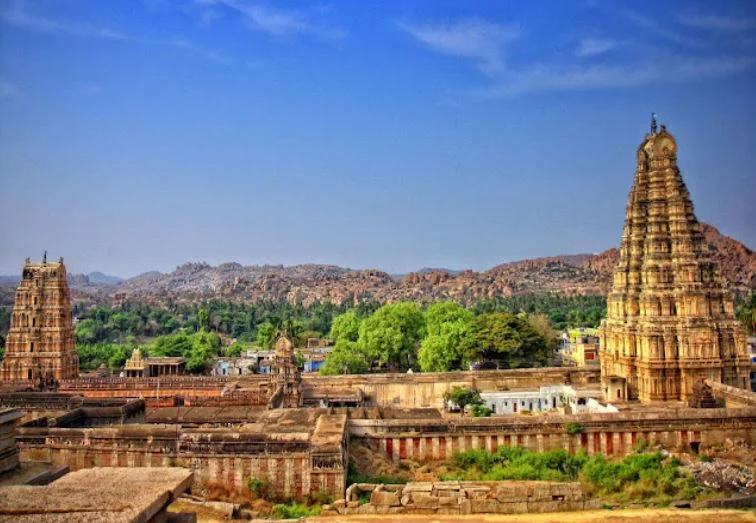
Here are 17 interesting facts about Hampi Temple.
1. Historical Facts about Hampi Temple
Hampi Temple, also known as the Group of Monuments at Hampi, is a UNESCO World Heritage Site located in the state of Karnataka, India.
Hampi is an ancient temple complex, also known as the Group of Monuments at Hampi, which showcases the remnants of the Vijayanagara Empire, one of the most powerful and prosperous empires in South India during the 14th to 16th centuries.
The Hampi Temple complex is spread across a vast area and is home to numerous temples, shrines, palaces, and other structures. It was once the capital city of the Vijayanagara Empire and served as a center of art, culture, and spirituality.
Hampi was once the capital of the mighty Vijayanagara Empire and served as a major religious and cultural center.
The temple complex is renowned for its exquisite architecture, intricate carvings, and historical significance.
It attracts history enthusiasts, architecture aficionados, and spiritual seekers from around the world.
2. Virupaksha Temple
The Virupaksha Temple is the main and most significant temple in Hampi.
Dedicated to Lord Shiva, it is believed to be one of the oldest functioning temples in India, with a history dating back to the 7th century.
The temple’s towering gopuram (entrance tower) stands tall and is adorned with intricate sculptures and carvings.
The inner sanctum houses the idol of Lord Virupaksha (a form of Lord Shiva) and various other deities.
The temple continues to be an active place of worship, drawing devotees and tourists alike.
3. Architectural Facts about Hampi Temple
The architecture of the Hampi Temple complex is a fusion of various styles, including Dravidian, Hoysala, and Vijayanagara.
The temples feature impressive stone carvings, depicting scenes from Hindu mythology, celestial beings, gods, and goddesses.
Intricate details can be observed in the pillars, walls, and ceilings, showcasing the exceptional craftsmanship of the artisans.
The sculptures showcase the rich cultural heritage and artistic expression of the Vijayanagara Empire.
The architectural splendor and sculptural artistry of the temples make Hampi a visual delight for visitors.
4. Monolithic Structures
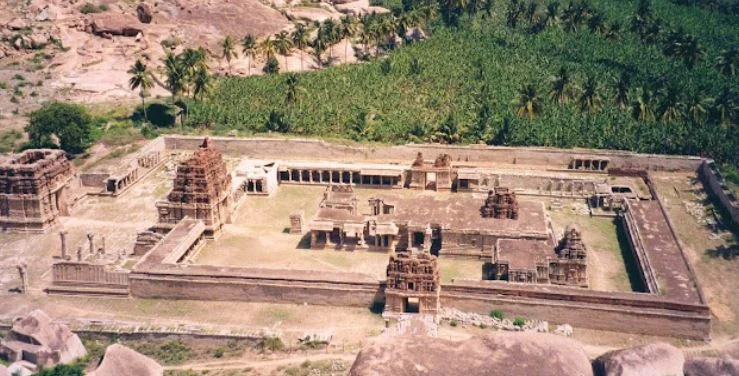
Hampi is famous for its monolithic structures, which are large rock formations sculpted into intricate shapes.
The monolithic structures include the monolithic bull (Nandi), Monolithic Ganesha, and the monolithic Narasimha statue.
The monolithic bull is a massive sculpture of Nandi, the vehicle of Lord Shiva, and is a popular attraction for visitors.
These structures reflect the engineering prowess and artistic skills of the Vijayanagara Empire.
They also hold religious and cultural significance and are considered sacred by devotees.
5. Vijaya Vittala Temple
The Vijaya Vittala Temple is one of the most iconic and stunning temples in Hampi.
It is dedicated to Lord Vittala, a form of Lord Vishnu.
The temple is renowned for its exquisite stone chariot, which is often considered the symbol of Hampi.
The chariot is a masterpiece of craftsmanship and a testimony to the architectural brilliance of the Vijayanagara Empire.
The temple complex also features the famous musical pillars that produce melodious sounds when struck.
6. Underground Shiva Temple
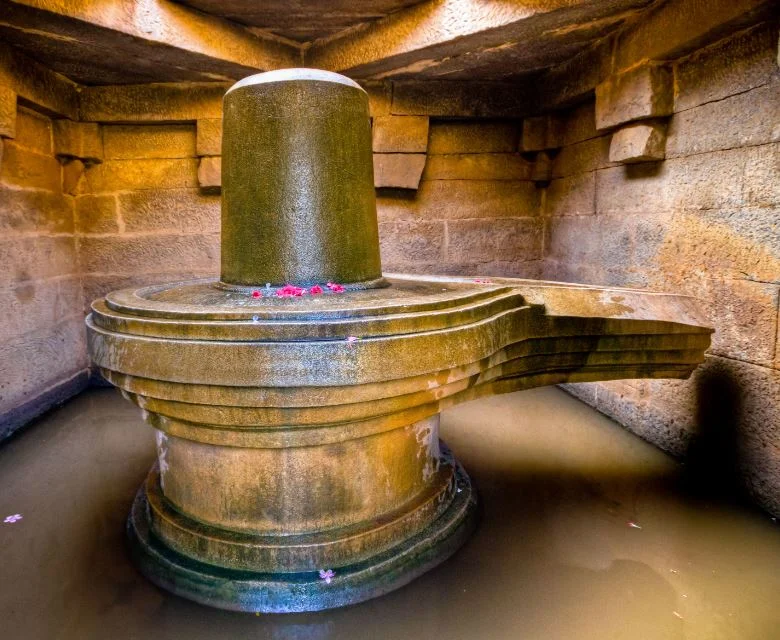
Hampi is home to an underground temple dedicated to Lord Shiva, known as the Underground Shiva Temple or the Prasanna Virupaksha Temple.
It is a unique architectural marvel where the sanctum sanctorum is situated underground.
The temple is accessible through a flight of steps leading to the underground chamber.
Devotees can offer their prayers and seek blessings from Lord Shiva in this sacred underground temple.
The Underground Shiva Temple showcases the ingenuity and innovative architectural techniques employed during the Vijayanagara period.
7. Hemakuta Hill Temples
Hampi is dotted with numerous temples and structures on Hemakuta Hill.
The Hemakuta Hill temples offer breathtaking views of the surrounding landscape and are a popular spot for sunset views.
The temples on Hemakuta Hill are dedicated to various deities, including Lord Shiva and Lord Vishnu.
The architecture of these temples reflects the distinctive style of the Vijayanagara Empire.
Exploring the Hemakuta Hill temples provides a sense of tranquility and spirituality.
8. Royal Enclosure – Facts about Hampi Temple
The Royal Enclosure in Hampi was the ceremonial and administrative center of the Vijayanagara Empire.
It comprises several structures, including the Mahanavami Dibba (an elevated platform), the Queen’s Bath, the King’s Audience Hall, and the Lotus Mahal.
The Mahanavami Dibba was used for grand celebrations and religious ceremonies.
The Queen’s Bath is a well-preserved structure that served as a private bathing area for the royal women.
The Royal Enclosure offers a glimpse into the grandeur and opulence of the Vijayanagara Empire.
9. Hazara Rama Temple
The Hazara Rama Temple is a small yet significant temple in Hampi.
It is dedicated to Lord Rama and contains exquisite carvings depicting scenes from the epic Ramayana.
The temple’s walls depict the entire story of the Ramayana, making it a visual narration of the epic.
The Hazara Rama Temple was used by the kings of the Vijayanagara Empire for ceremonial purposes and as a private temple.
It provides insights into the religious and cultural practices of the Vijayanagara period.
10. Achyutaraya Temple
The Achyutaraya Temple is another notable temple in Hampi.
It is dedicated to Lord Tiruvengalanatha, a form of Lord Vishnu.
The temple features a massive complex with intricate carvings and beautifully decorated pillars.
The outer walls of the temple depict various mythological stories and scenes from the Mahabharata and Ramayana.
The Achyutaraya Temple showcases the architectural brilliance and devotion of the Vijayanagara Empire.
11. Pushkarani (Stepwells) – Facts about Hampi Temple
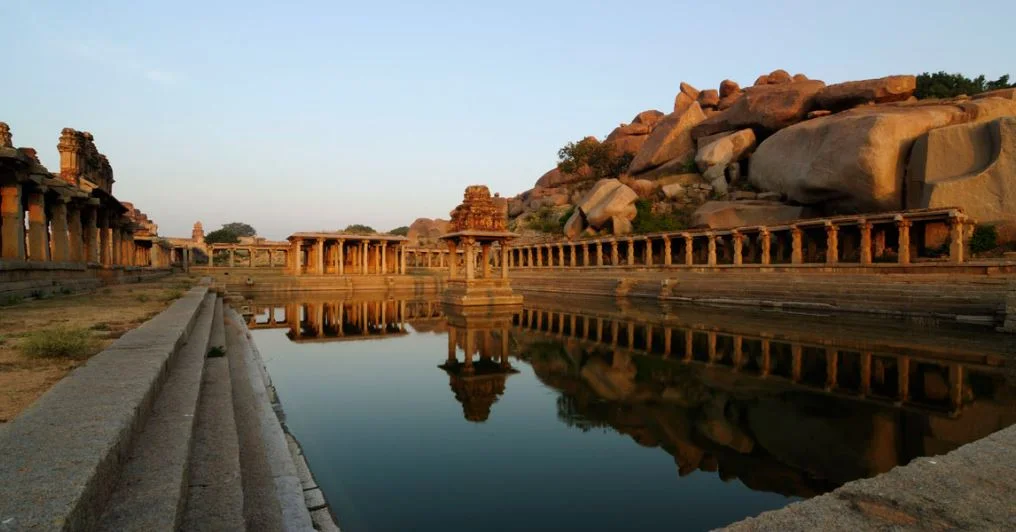
Hampi has several Pushkarani, also known as step-wells or sacred tanks.
These step-wells were used for ritualistic bathing and religious ceremonies.
The Pushkarani were built with intricate carvings and provided a source of water for the people of Hampi.
The step-wells, such as the Queen’s Bath Pushkarani and the Mahanavami Dibba Pushkarani, reflect the engineering expertise of the Vijayanagara Empire.
They are architectural marvels and significant from a historical and religious perspective.
12. Stepped Tank
The Stepped Tank, also known as the Queen’s Bath Tank, is a unique water reservoir in Hampi.
It is a rectangular-shaped tank with a flight of steps leading down to the water.
The tank was used by the royal women for bathing and recreational purposes.
The Stepped Tank showcases the engineering ingenuity of the Vijayanagara Empire in creating efficient water management systems.
It is a well-preserved structure and a testament to the grandeur of the bygone era.
13. Matanga Hill and Veerabhadra Temple
Matanga Hill is a prominent hill in Hampi, offering panoramic views of the surrounding landscape.
The hill is believed to be the abode of Lord Shiva in the form of Matangaeshwara.
Atop Matanga Hill, there is the Veerabhadra Temple, dedicated to Lord Veerabhadra, a fierce form of Lord Shiva.
The climb to Matanga Hill and the visit to Veerabhadra Temple offer a blend of natural beauty and spiritual essence.
The hill and temple hold religious significance and provide an opportunity for peaceful contemplation.
14. Pattabhirama Temple
The Pattabhirama Temple is an intricately carved temple dedicated to Lord Rama.
The temple is known for its elaborate sculptures depicting scenes from the Ramayana and other mythological stories.
The exquisite craftsmanship and attention to detail make the Pattabhirama Temple a must-visit for art enthusiasts.
The temple complex also includes a well-maintained garden and a large courtyard.
It offers a serene and peaceful ambiance for devotees and visitors.
15. Zenana Enclosure and Lotus Mahal
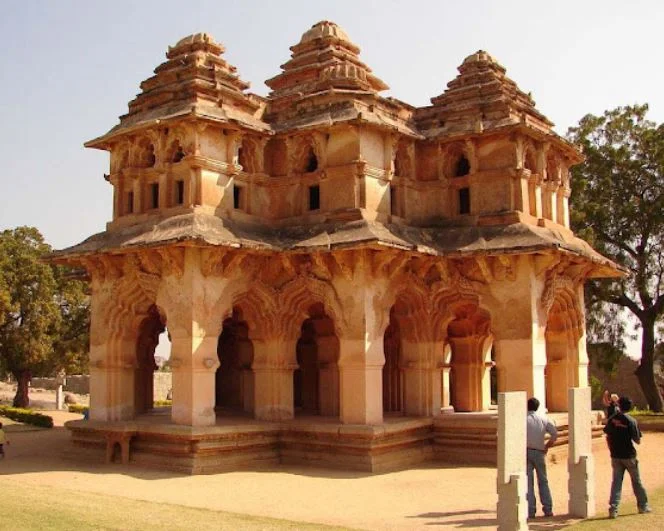
The Zenana Enclosure was the private area reserved for the royal women in the Vijayanagara Empire.
The enclosure consists of various structures, including the elegant Lotus Mahal.
The Lotus Mahal is a two-story pavilion with stunning arches and lotus-shaped domes.
It served as a recreational and meeting place for the royal women.
The architectural beauty of the Lotus Mahal and the Zenana Enclosure provides insights into the lifestyle of the royals.
16. Hampi Bazaar and Monuments
Hampi Bazaar is a bustling street lined with shops and market stalls.
It was once a vibrant marketplace where traders and merchants conducted business.
The bazaar is flanked by various monuments, including the Monolithic Bull (Nandi), Ugra Narasimha Statue, and Kadalekalu Ganesha.
The Monolithic Bull is a massive statue of Nandi, the vehicle of Lord Shiva, and is a popular attraction for tourists.
The bazaar and its surrounding monuments showcase the commercial and cultural aspects of the Vijayanagara period.
17. Hampi Utsav (Festival Facts about Hampi Temple)
Hampi Utsav, also known as the Hampi Festival, is a grand celebration held annually in Hampi.
The festival showcases the rich cultural heritage of Hampi through music, dance, drama, and other artistic performances.
Artists from various parts of India gather to perform traditional folk dances and classical music concerts.
The festival also includes processions, cultural exhibitions, and fireworks, attracting a large number of visitors.
Hampi Utsav provides a vibrant and festive atmosphere, immersing visitors in the cultural extravaganza of the region.
Related Posts
- 21 Facts About Vaishno Devi
- 19 Facts About Amarnath
- 21 Facts About Kedarnath
- 27 Facts About Badrinath
- 16 Facts About Gangotri
- 17 Facts About Yamunotri
